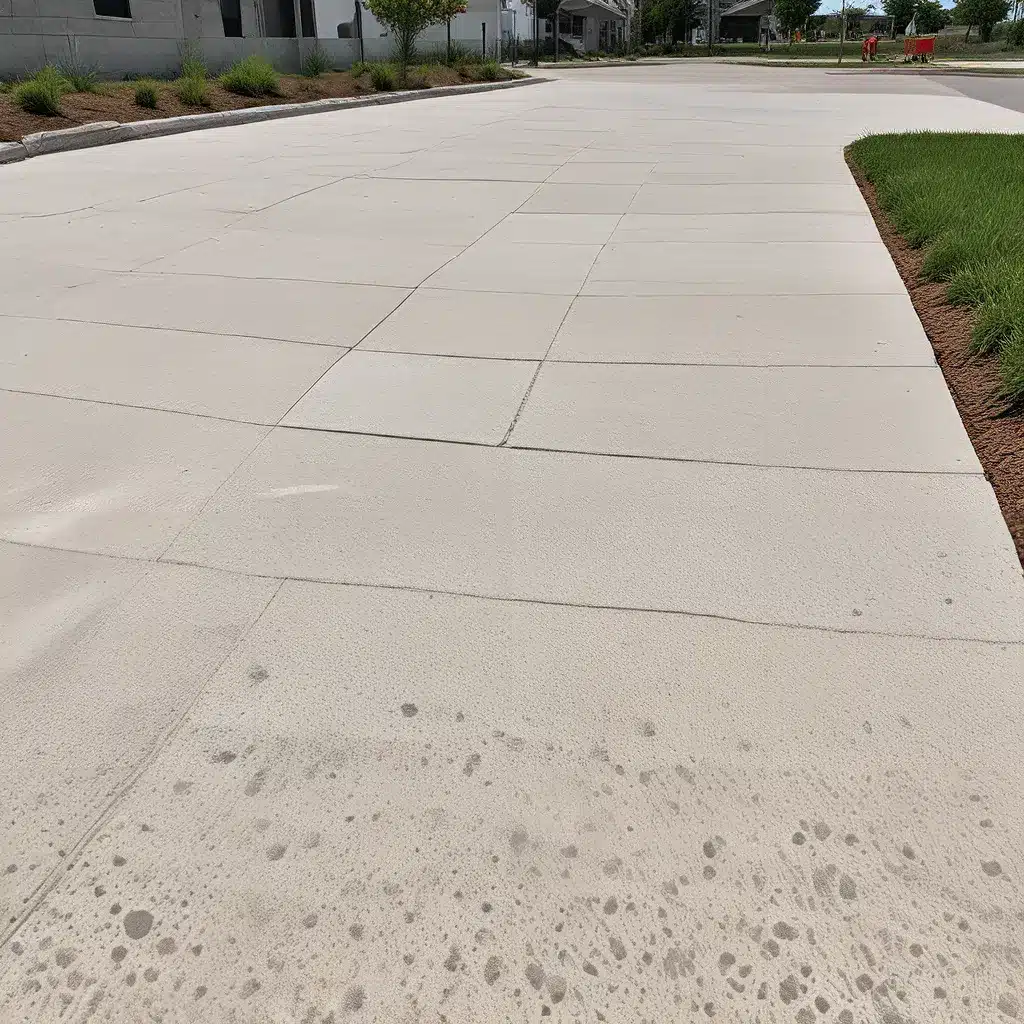
As the demand for sustainable construction practices continues to grow, the spotlight has shifted to the concrete industry and its potential impact on the environment. In the heart of the Midwest, Kansas City is embracing the challenge of creating more eco-friendly concrete installations that not only enhance the city’s visual appeal but also contribute to its long-term sustainability.
The Rise of Green Roofs in Kansas City
One of the most prominent sustainability initiatives in Kansas City is the increasing adoption of green roofs. These rooftop gardens, which feature a layer of vegetation, have been proven to help reduce the heat island effect – the phenomenon where urban areas experience higher temperatures compared to surrounding rural areas.
According to the EPA, green roofs can lower the surface temperature of a building by 30-40°F and reduce the ambient temperature of the surrounding area by up to 5°F. This remarkable temperature reduction directly translates to decreased energy demands for cooling, leading to significant annual savings of around $0.23 per square foot of the roof’s surface.
The benefits of green roofs extend far beyond energy efficiency. These eco-friendly installations also reduce stormwater runoff, absorb pollutants, and provide natural habitats for local flora and fauna. In Kansas City, the growth of the green roof industry has been impressive, with over 900 projects totaling more than four million square feet across the United States and Canada in 2016 alone.
Balancing Costs and Benefits of Green Roofs
While the upfront costs of installing a green roof may be higher than conventional roofing materials, the long-term benefits often outweigh the initial investment. According to a lifecycle cost analysis by researchers at Lawrence Berkeley National Laboratory, the benefits of an extensive green roof (one without public access) are 14% more per square foot than a conventional roof over a 50-year period, taking into account factors such as energy cost savings, avoided emissions, and reduced stormwater fees.
For building owners, these long-term savings can help offset the higher initial costs of green roof installation. Additionally, some municipalities, like Kansas City, offer incentives and stormwater management fee reductions for property owners who implement green roof systems, further improving the financial viability of these eco-friendly projects.
Concrete’s Role in Sustainable Construction
While green roofs are a significant component of Kansas City’s sustainability efforts, the concrete industry also plays a crucial role in the city’s quest for environmental stewardship. Concrete, being a fundamental material in construction, has a substantial carbon footprint due to the energy-intensive processes involved in its production.
Concrete contractors in Kansas City are rising to the challenge by exploring innovative solutions to reduce the environmental impact of concrete installations. This includes incorporating recycled materials, optimizing concrete mixes for better performance, and implementing energy-efficient construction techniques.
By collaborating with local authorities, concrete contractors can also contribute to the development of building performance standards and sustainable procurement policies, such as the “Buy Clean” initiative, which aims to promote the use of construction materials with lower embodied emissions.
Adapting to Climate Risks and Resilience
As the effects of climate change become more pronounced, the resilience of Kansas City’s infrastructure and built environment is of paramount importance. Concrete contractors in the region are playing a crucial role in this regard, working closely with architects, engineers, and city planners to ensure that new concrete installations are designed to withstand the impacts of extreme weather events, such as heavy rainfall, flooding, and temperature fluctuations.
This emphasis on climate-resilient construction not only protects the city’s infrastructure but also safeguards the long-term investments made by both public and private entities. By incorporating adaptation strategies and climate-informed decision-making into their practices, concrete contractors in Kansas City are helping to future-proof the city’s built environment.
Fostering a Sustainable Workforce and Supply Chain
Achieving the ambitious sustainability goals set forth in Kansas City requires a concerted effort across the entire concrete industry supply chain. Concrete contractors are actively engaging with labor unions, worker organizations, and the public sector to ensure that the transition to eco-friendly practices creates well-paying union jobs and economic opportunities for the local community.
Moreover, sustainable procurement and emissions tracking of building materials, such as concrete and steel, are becoming increasingly important considerations in the decision-making process. Kansas City’s concrete contractors are aligning their operations with these emerging sustainability standards, collaborating with suppliers to enhance transparency and reduce the embodied emissions associated with the materials they use.
Conclusion: Embracing the Future of Sustainable Concrete in Kansas City
As Kansas City continues to lead the way in sustainable construction practices, the concrete industry remains at the forefront of this environmental transformation. Through the widespread adoption of green roofs, the implementation of energy-efficient concrete installation techniques, and the ongoing adaptation to climate risks, the city is positioning itself as a model for eco-friendly urban development.
By prioritizing sustainability, fostering innovation, and engaging with the local community, Kansas City’s concrete contractors are not only enhancing the visual appeal and livability of the city but also contributing to a more resilient and environmentally responsible future. As the demand for sustainable construction grows, the concrete industry in Kansas City is poised to deliver innovative solutions and lead the way in this critical endeavor.

